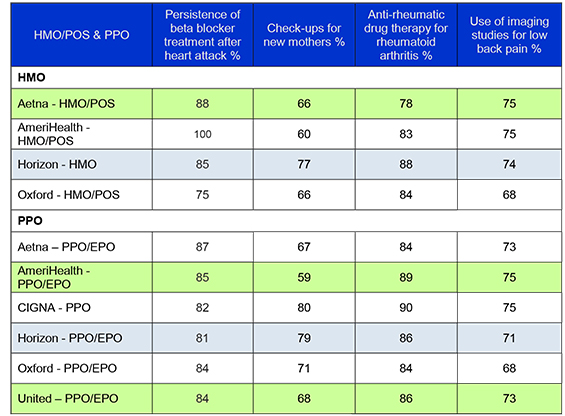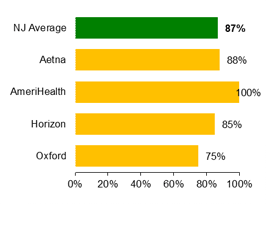How well does the HMO or PPO care for members who are living with illness?
HMOs and PPOs should work with doctors to care for members who are sick or living with chronic illness. HMOs and PPOs reported on the percentage of their relevant membership who received the following:
- Persistence of beta blocker treatment after a heart attack
- Check-ups for new mothers
- Anti-Rheumatic drug therapy in rheumatoid arthritis
- Use of imaging studies for low back pain
The following table shows how well each HMO and PPO performed. The bar graphs following show the HMOs and PPOs compared to the New Jersey average. |








